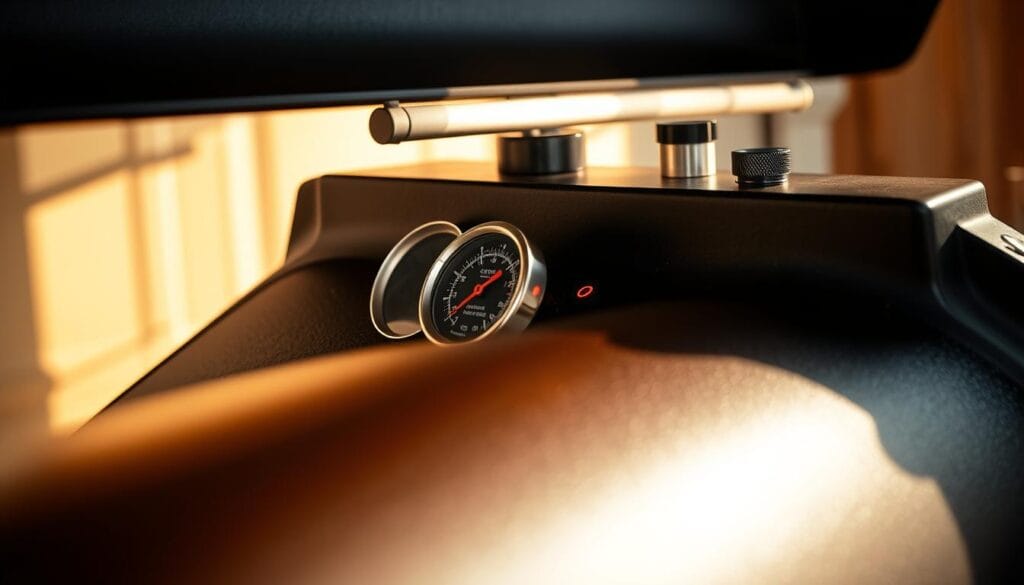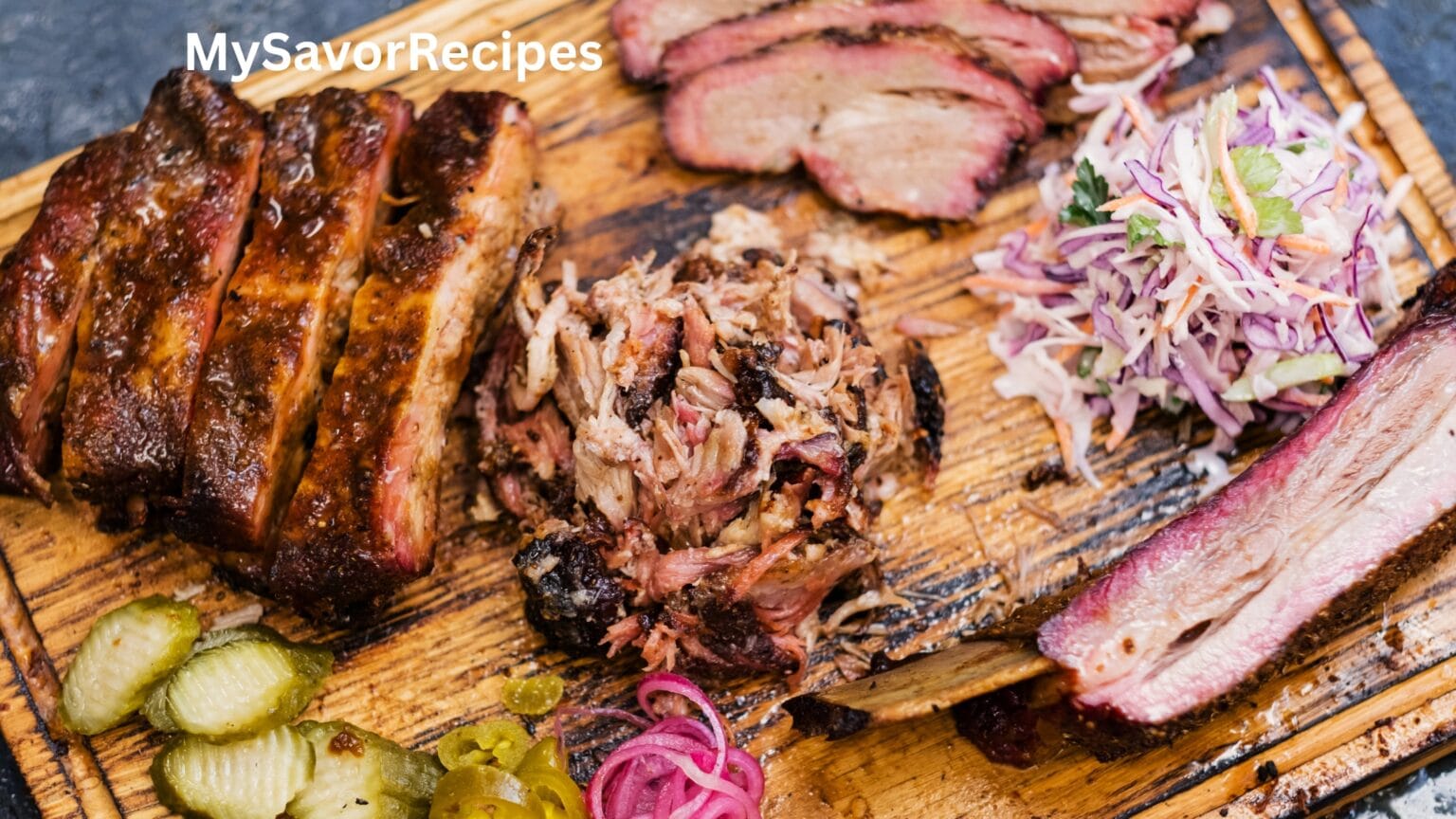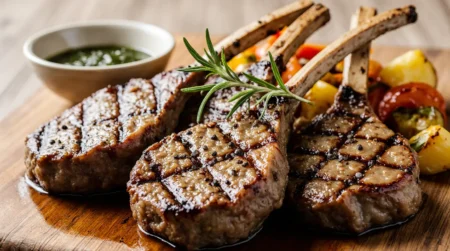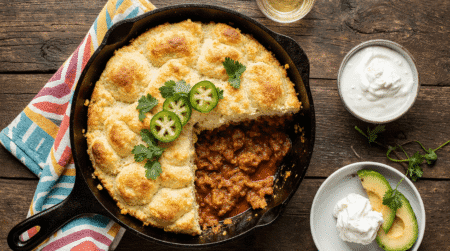The smell of a perfectly smoked brisket can take you to a magical world. Growing up in Texas, I saw my grandfather turn a tough cut into a tender, delicious dish. It brought our family together. BBQ brisket is more than a meal; it’s a celebration of tradition, skill, and patience.
Smoked brisket is the top of barbecue art. This guide will help you make a legendary brisket. You’ll learn how to pick the right cut and control temperatures. These secrets turn ordinary meat into a masterpiece.
Get ready for a tasty journey to improve your BBQ brisket skills. The techniques here come from generations of barbecue tradition. They’ve been perfected through endless hours of smoking and testing.
Table of Contents
Key Takeaways
- Understand the rich cultural significance of smoked brisket
- Learn professional-level smoking techniques
- Discover how to select the perfect brisket cut
- Master temperature and smoke control
- Transform tough meat into a tender delicacy
Understanding the Basics of Smoked Brisket
Exploring Texas Style Brisket needs a good base of knowledge. Whether you love backyard BBQ or want to be a pitmaster, learning about Slow Smoked Brisket is key. It starts with knowing the basics.
Anatomy of a Perfect Brisket Cut
A brisket is more than meat—it’s a canvas for flavor. It has two parts: the point and the flat. Each part adds its own special touch to your BBQ:
- The point: Fattier and more marbled, delivering rich flavor
- The flat: Leaner section with consistent muscle grain
Essential Equipment for Smoking
To make great Texas Style Brisket, you need the right tools. Your smoking kit should have:
- Reliable smoker (offset, pellet, or electric)
- Accurate meat thermometer
- Quality wood chips (hickory, oak, or mesquite)
- Heavy-duty aluminum foil
- Sharp trimming knife
Temperature Control Fundamentals
Getting precise with temperature is crucial for Slow Smoked Brisket. Keeping temperatures steady makes your BBQ truly special.
| Temperature Range | Smoking Stage | Expected Outcome |
|---|---|---|
| 225-250°F | Low and Slow Smoking | Tender, Juicy Meat |
| 275-300°F | Faster Cooking | Crispy Bark Development |
Selecting the Perfect Cut for Your Texas Style Brisket
Choosing the right brisket is key to making a delicious Texas Style Brisket. The quality of your meat affects the taste and texture of your brisket.
When looking for the perfect brisket, keep these tips in mind:
- Look for well-marbled meat with consistent fat distribution
- Choose USDA Prime or Choice grade for optimal flavor
- Select a full packer brisket weighing between 12-14 pounds
- Check for bright red color with creamy white fat
Meat grades are important for your Texas Style Brisket. Prime grade has the most marbling, giving rich flavor and tenderness. Choice grade is a good balance of quality and price, perfect for home smokers.
Pro tip: A great brisket starts with exceptional meat selection!
Local butchers and specialty meat markets are the best places for premium brisket. They offer personalized advice and high-quality cuts. Online meat retailers also offer top-tier brisket for barbecue lovers.
Your careful selection will help you make a delicious, competition-worthy Texas Style Brisket. It will have everyone asking for your best brisket recipe.
Preparing Your Brisket for the Ultimate BBQ Experience
Turning a raw brisket into a delicious BBQ dish needs careful prep. Success begins long before you start smoking. The right steps can make your smoked brisket truly stand out.
Trimming Techniques for Maximum Flavor
Trimming is key for a perfect BBQ brisket. You want to cut off extra fat but keep enough for moisture and flavor. Here’s what to focus on:
- Remove hard fat that won’t melt during cooking
- Trim to make the surface even for even cooking
- Keep about 1/4 inch of fat cap for moisture
Creating the Perfect Smoked Brisket Rub
A great smoked brisket rub can change your BBQ game. The best rub mixes salt, pepper, and spices to boost the beef’s taste.
| Ingredient | Quantity | Purpose |
|---|---|---|
| Coarse Black Pepper | 2 tbsp | Primary flavor base |
| Kosher Salt | 2 tbsp | Seasoning and bark formation |
| Paprika | 1 tbsp | Color and mild sweetness |
| Garlic Powder | 1 tsp | Depth of flavor |
Moisture Management Methods
Keeping your brisket juicy is a BBQ skill. Here are some ways to manage moisture:
- Meat Injection: Use a flavorful liquid to add moisture from inside
- Spritzing during cooking to stop surface drying
- Wrapping to keep moisture inside
Mastering these steps will help you create a smoked brisket that wows BBQ fans.
Mastering Your Smoker Setup and Temperature Control

Getting the perfect slow smoked brisket begins with knowing your smoker. It’s all about managing temperature and creating the right environment. This turns a tough piece of meat into a tender delight.
The right smoker is key to your brisket smoking success. Each smoker needs a different approach:
- Offset smokers need careful fire management
- Pellet grills offer consistent temperature control
- Kamado-style cookers keep heat well
Temperature control is vital for brisket smoking. Keep the temperature between 225-250°F. Here’s how to manage your smoker’s heat:
- Watch your smoker’s built-in thermometer
- Use a separate digital meat thermometer for accuracy
- Adjust air vents to control oxygen and heat
- Add fuel slowly to keep the temperature steady
Choosing the right wood is crucial for flavor. Post oak, hickory, and mesquite are top picks. They add rich, smoky flavors. Aim for a thin blue smoke for the best taste.
Pro tip: Wind and external temperatures can affect your smoker. Always have extra fuel ready and be ready to adjust as needed.
With time, you’ll get to know your smoker’s quirks. Brisket smoking will become an art form for you.
Essential Smoking Techniques for Restaurant-Quality Results
To make your homemade smoked brisket truly special, you need to learn some key smoking techniques. Professional pitmasters see making authentic smoked brisket as an art. It requires precision, patience, and a deep understanding of how to prepare meat.
Managing the Smoke Profile
The smoke profile is key to getting rich, complex flavors in your brisket. Pick your wood wisely to boost the meat’s natural taste without overpowering it. Here are some wood options to consider:
- Post oak for traditional Texas-style flavor
- Hickory for robust, strong smoke
- Pecan for subtle, sweet undertones
Wrapping Methods and Timing
Wrapping your brisket can greatly affect its moisture and tenderness. The Texas Crutch method involves wrapping the meat in butcher paper or aluminum foil while it cooks.
| Wrapping Method | Pros | Cons |
|---|---|---|
| Butcher Paper | Maintains bark texture | Requires more monitoring |
| Aluminum Foil | Speeds up cooking | Can soften bark |
Dealing with the Stall Period
The stall period is when your brisket’s temperature stops rising because of moisture evaporation. To fight this, try:
- Keeping your smoker temperature steady
- Wrapping the brisket at around 160-170°F
- Using a water pan to control humidity
By using these methods, you can make your homemade smoked brisket as good as the best barbecue places.
Monitoring and Testing for Perfect Doneness

Getting the brisket just right is key. It’s all about the temperature. Knowing when it’s tender and flavorful makes all the difference.
Pitmasters use a few ways to check if the brisket is done:
- Meat probe testing
- Instant-read thermometer readings
- Visual texture assessment
- Tenderness verification
The temperature is very important. You want it between 195°F and 205°F. The probe test is the best way to check. When the probe goes in easily, it’s ready.
| Temperature Range | Doneness Level | Texture Expectation |
|---|---|---|
| Below 190°F | Undercooked | Tough, Chewy |
| 195°F-205°F | Perfect | Tender, Juicy |
| Above 210°F | Overcooked | Dry, Stringy |
Color and bark can also help. A dark brown color with a bit of bark means you’re close to perfection.
“Patience and precision are the secret ingredients to an exceptional brisket.” – BBQ Pitmaster
Resting and Slicing Your Masterpiece
The last steps in making an authentic smoked brisket are just as important as the smoking itself. Proper resting and slicing can turn a good BBQ brisket into a truly amazing dish. It will impress even the pickiest barbecue fans.
Proper Resting Techniques
Resting your BBQ brisket is a key step. It lets the meat’s juices spread out evenly. After taking the brisket off the smoker, wrap it in butcher paper or foil.
Put the wrapped brisket in a clean cooler or a warm oven. This keeps its temperature steady.
- Rest the brisket for 1 to 2 hours for the best moisture
- Keep the temperature between 140-150°F while resting
- Make sure the brisket is covered to avoid losing heat
Slicing Against the Grain
Slicing against the grain is crucial for tender, delicious brisket. Find the muscle fibers’ direction and cut across them with a sharp knife.
“A perfectly sliced brisket should pull apart easily and showcase beautiful, juicy layers.” – BBQ Pitmaster
Presentation Tips
Make your BBQ brisket look great with these tips:
- Use a sharp, long slicing knife
- Cut slices about ¼ to ½ inch thick
- Arrange slices on a wooden cutting board or warm platter
- Add fresh herbs for a nice touch
By following these steps, you’ll turn your smoked brisket into a true masterpiece. It will impress and satisfy your guests.
Conclusion
Learning to smoke brisket is a tasty journey that needs dedication and patience. It starts with choosing the best meat and mastering your technique. You also need to be patient during the smoking process.
Every time you smoke a brisket, you learn something new. You’ll get better at trimming, seasoning, controlling temperature, and resting. These skills will make your backyard BBQs as good as those from professional pitmasters.
Don’t be shy to try new things. Experiment with different wood chips and rubs. Your skills will grow with each attempt, leading to a delicious, tender brisket that will wow everyone.
Keep learning, stay curious, and enjoy every step of your brisket journey. Your hard work and love for BBQ will make every slice a hit.




